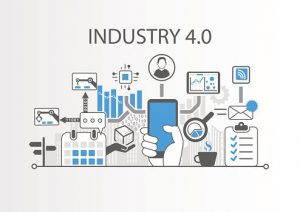Where once only our computers, phones and gadgets were connected to the internet, the internet of things (IoT) is now making it a truly connected world.
Cars, appliances, road signs, weather stations, pollution detectors, medical patients, even farm animals – if anyone or anything can have a sensor put on it, it can be a part of IoT.
IoT is part of what is called Industry 4.0, or the fourth major upheaval in the history of industry. It is most associated with manufacturing but can be applied to many other industries.
Industry 4.0 involves the following factors:
- The rapid increase in the amount of data, computational power and connectivity (IoT is a major driver in this area)
- The increased use of data analytics to drive business strategy
- The emergence of machine learning and artificial intelligence
- Advances made in transferring digital instructions to the physical world (obviously, another big IoT area)
Uses of IoT
What all this means for businesses is the ability to gather information from objects and people in the “real world” through sensors that share information with each other as well as being connected to the internet.
The data gathered from the IoT will mean even more information for organizations to use in streamlining operations.
For example, it can help supply chain managers know where trucks, trains and ships are in the supply route, as well as the amount of inventory in a warehouse. For healthcare operations, sensors worn by patients can transmit real-time data on their physical condition to medical professionals far away. It’s also the technology behind the invention of autonomous cars.
By 2020, projections call for 26 billion devices to be connected to the IoT.
Lean Six Sigma and IoT
As with all things involving data, the challenge has moved from collecting and storing data to figuring out the best ways to put it to use. That’s where the tools and techniques of Lean Six Sigma can come into play.
With the IoT, the amount of data available will grow even larger than it already is today. For example, retailers will have finely grained information on customers’ buying habits. Manufacturers will have details on every phase of any process. Transportation officials will have a better grasp on where problems are occurring in a city and how to allocate tax dollars to improve roadways and provide better public transportation.
However, before it can be used, data must be cleaned and formatted in a way that it can be analyzed for the type of insights that can improve a business. That’s the first step in any Lean or Six Sigma process – analyzing the data to find out where an operation stands and what changes need to be made.
By aligning IoT and Industry 4.0 with Lean Six Sigma methodology, organizations can better leverage vast amounts of data to make operations more efficient and provide better products and services to customers.
Applying Lean Six Sigma
In a way, IT should be viewed as another channel to gather data. Turning that data into actionable business intelligence still requires a consistent and successful strategy. That means using proven methods such as Lean Six Sigma.
Six Sigma focuses on eliminating defects in a process. Lean focuses on cutting out waste in a process by keeping only those steps that add value to the end user. With the big data that IoT will provide organizations, the tools and techniques provided by Six Sigma are more important than ever.
For example, studies have already been done on applying Lean Six Sigma to supply chains. Managing supply chains have become more complex and competitive, with businesses now having a global reach and all of them are trying to beat each other on providing the best service.
In this study, researchers found that a “Lean Six Sigma approach in global supply chain using Industry 4.0 and IoT creates an ideal process flow that is highly optimized as well as perfect and free from defects and wastage.”
While only a theory, the study provides a blueprint for those wanting to couple Lean Six Sigma quality control and continuous process improvement with the potential of IoT and Industry 4.0.
Three Areas Of Focus
Businesses and consultants have started to dig deep into the use of Lean Six Sigma and the expansion in the amount of available data. The demand for quality control and process improvement is high. Otherwise, organizations might find themselves lost in a forest of data.
In The Manufacturer, a website that focuses on the manufacturing industry, three areas were identified where Lean Six Sigma can accelerate implementation of new technologies:
- Ensuring that customer engagement remains forefront as organizations move into Industry 4.0
- Using the lessons learned from previous advances in technology to optimize the use of IoT
- Using risk assessment in the implementation of IoT and Industry 4.0
IoT and Industry 4.0 offer businesses advantages in data collection and potential business intelligence. However, the need for a quality process to be in place has not diminished. Managers and employees with knowledge in Lean Six Sigma continuous process improvement are better positioned to take an active role in ensuring that new technologies are incorporated into an operation in a meaningful way.
They also will understand that no leap forward in technology will give an organization an advantage without having a solid process in place, such as the framework provided by Lean Six Sigma.



